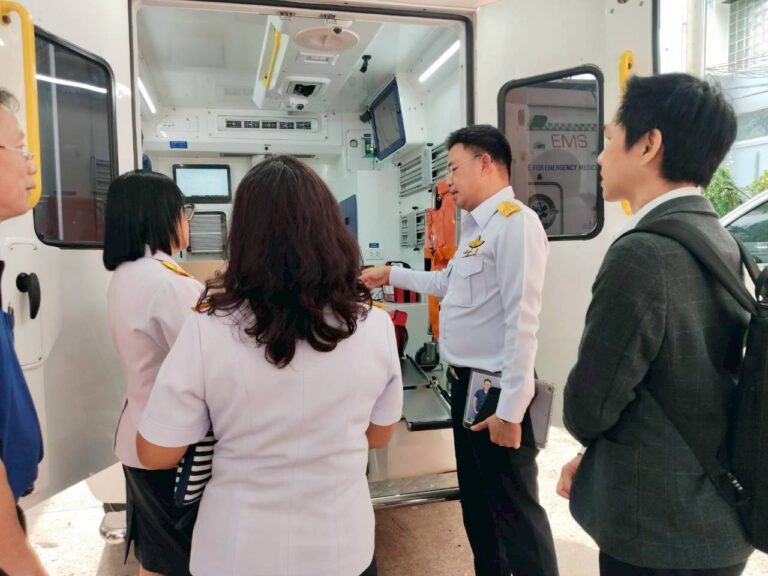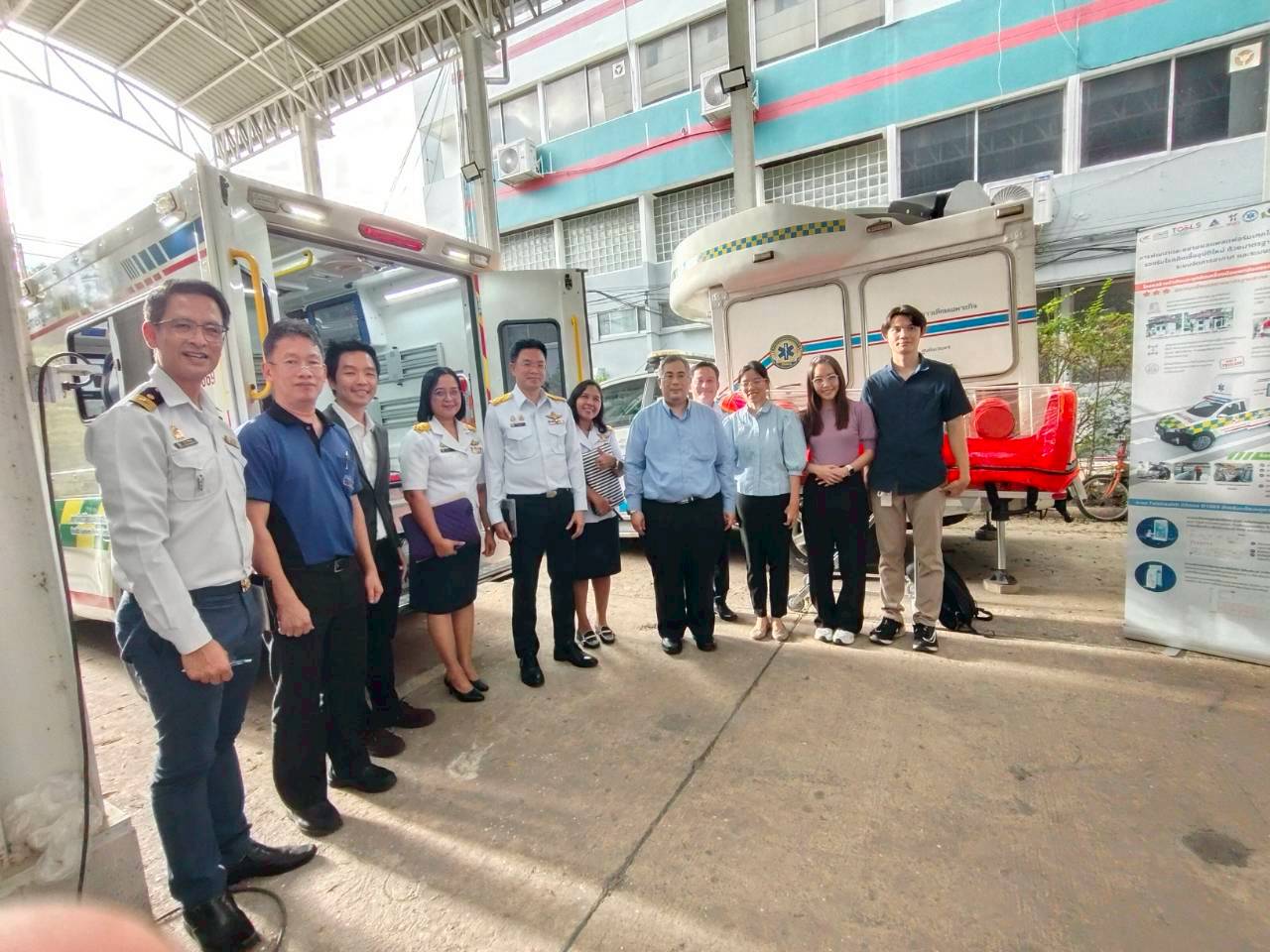
On September 22, 2025, the National Metal and Materials Technology Center (MTEC), under the National Science and Technology Development Agency (NSTDA), led by Dr. Sarawut Lerspalungsanti, MTEC Deputy Director and Project Lead, along with the research team of Dr. Nattanun Thatphithakkul and Dr. Pratana Kukieattikool, formally unvield the Digital Emergency Medical Service (Digital EMS) prototype ambulance —engineered to enhance preparedness and response to emerging infectious diseases — to the National Institute for Emergency Medicine (NIEM). The initiative was jointly funded by the Health Systems Research Institute (HSRI).

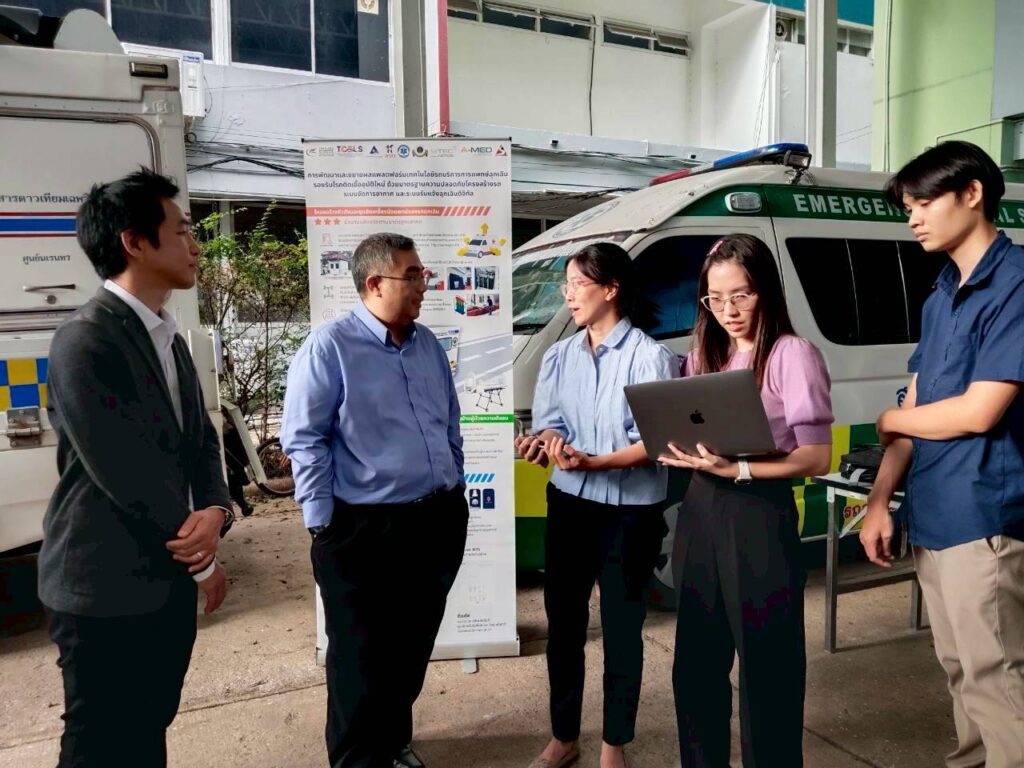
The project aims to develop a next-generation emergency medical service (EMS) vehicle prototype, specifically designed to address the challenges posed by emerging infectious diseases, through the integration of three core technological platforms. These comprises a vehicle structure and medical equipment mounting system engineered in accordance with international standards such as AMD Standard, SAE, and EN, thereby ensuring structural integrity, safety, and ergonomic equipment arrangement for medical operations; an in-vehicle air management system featuring a negative pressure unit and patient isolation chamber that conform to ISO 14644 standards to effectively regulate airborne contaminants; and the Digital EMS platform, developed to enhance operational efficiency, reduce patient transfer time to healthcare facilities, and improve the effectiveness of critical care interventions during transport.
The Digital EMS platform comprises three integrated subsystems designed to enhance emergency response efficiency. The Call Information System (CIS) serves as a unified digital communication interface that dynamically switches between voice, text, image, and video, enabling real-time accessibility and rapid symptom assessment. The Emergency Telemedical Operation (ETO) system connects to vital sign monitoring devices within ambulances and transmits live data to dispatchers and physicians, supporting immediate and informed medical decisions. The Medical Information System (MIS) displays and manages critical patient data essential for life-saving intervention during transport to the hospital.
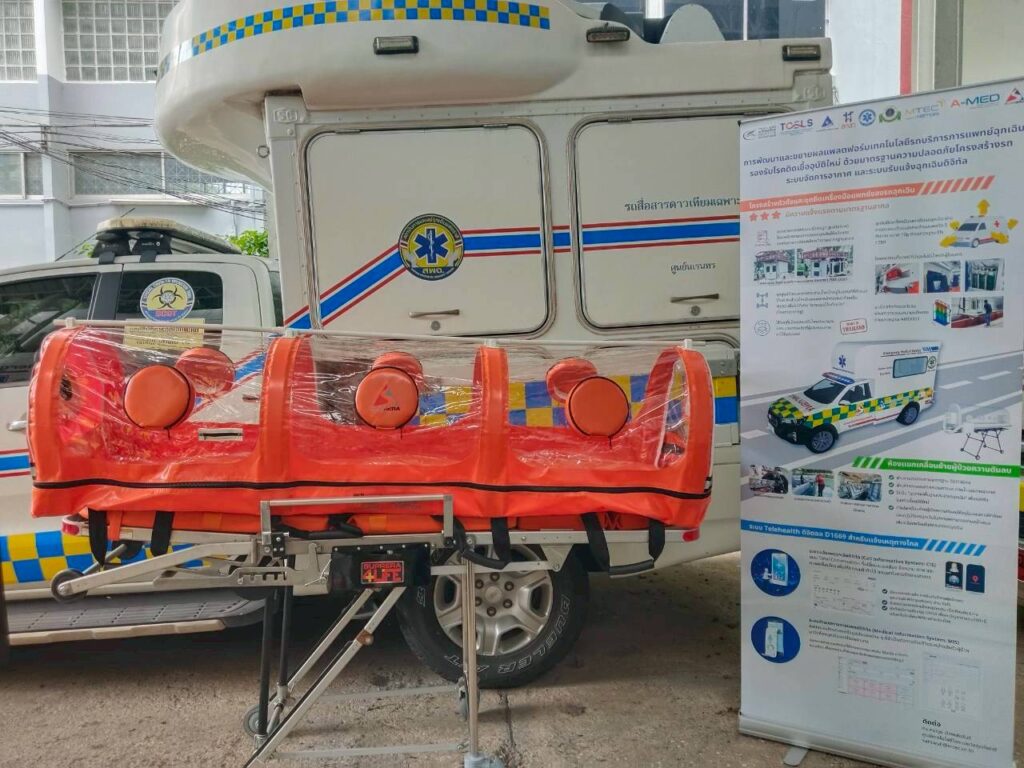
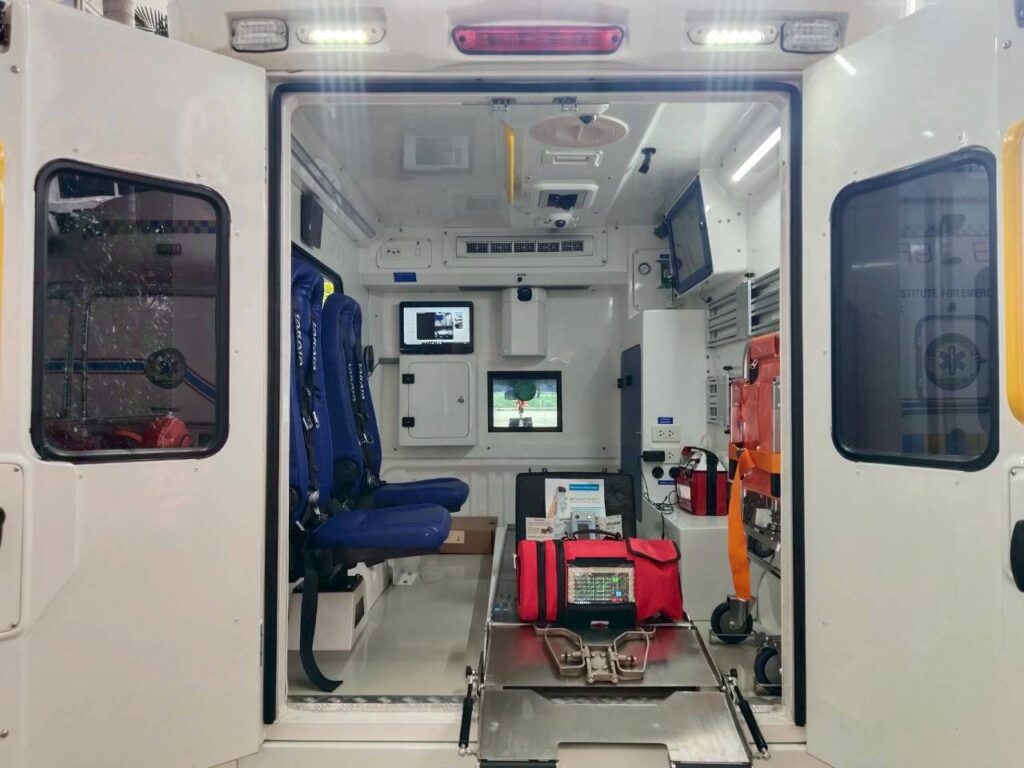

The presentation benefited from insightful feedback and constructive recommendations from Dr. Pichet Nongchang, Secretary-General, and the executive team of the National Institute for Emergency Medicine (NIEM), as well as from Dr. Jare Vichathai, Research Manager, and Ms. Wannaporn Boonruang of the Health Systems Research Institute (HSRI).
The Digital EMS prototype ambulance has been field-tested in collaboration with the Emergency Medicine Department, Faculty of Medicine, Ramathibodi Hospital, Mahidol University, along with multiple healthcare units. Additionally, comprehensive guidelines and a cost structure framework have been formulated to serve as a scalable model for adoption by provincial-level local administrative organizations, with the goal of further elevating the national standard of the emergency medical service system.

